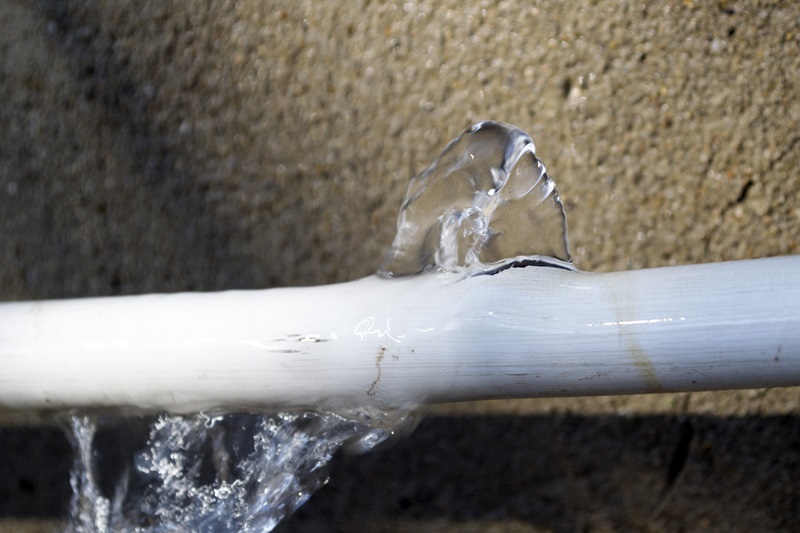Brokerage sees nearly 200% increase in cold weather claims

With temperatures plummeting across Canada recently, one insurance brokerage has seen a 191% increase in cold weather-related claims in the early days of 2024 compared to 2023.
“Over the past couple of weeks, we’ve seen almost three times as many cold weather-related claims come in compared to the same time last year,” Wendy McCracken, claims manager at Square One Insurance Services, said in a press release Thursday. “And the majority of them arose from frozen pipes.”
When water inside a pipe freezes, the pressure can cause pipes and fittings to burst. On average, a burst pipe incident costs about $16,000 to repair, said Square One, a home and auto brokerage serving British Columbia, Alberta, Saskatchewan, Manitoba, Ontario and Quebec. The 191% increase in weather-related claims applies to all these provinces, Square One confirmed to Canadian Underwriter.
As of Thursday morning, extreme cold warnings remain in effect in the Prairies, with wind chill values around -40°C expected in parts of northern Alberta, southern Saskatchewan and southwestern Manitoba, Canadian Press reported.
Home insurance usually covers damage caused by a frozen, burst pipe subject to two conditions, Square One said.
The first condition is that water damage occurs due to a sudden and unexpected breakage in a heated part of the home. The second applies if the homeowner is away from the home for more than a certain number of days during the ‘usual heating season.’ Homeowners must arrange for someone to check on the home daily to ensure heating is maintained, or they must shut off their main water supply and drain the pipes entirely.
“It’s important to note that there’s no definition of usual heating season because temperatures vary greatly across Canada,” McCracken warned. “Each insurance provider sets the number of days away before the homeowner must take action. For example, policies offered by Square One require homeowners away for more than seven days.”
iStock.com/Dzurag
Insurance Bureau of Canada (IBC) agreed standard home policies will cover freezing and burst pipe damage provided the pipes are in the heated portion of the home and reasonable steps are taken to maintain heat.
However, if your client’s furnace or heat pump breaks down and results in frozen pipes, a home policy covers resulting damage, but not the cost to repair the furnace or heat pump, said Rob de Pruis, IBC’s national director of consumer and industry relations.
“A broken furnace or heat pump is commonly a maintenance issue,” de Pruis said in an article Wednesday. “Some commercial insurance policies do cover equipment breakdown, however this is not generally available in a home insurance policy.”
Homeowners can take precautions to prevent damage in the first place. For example, insulating any exposed water lines and ensuring garden hoses are disconnected, Vince Singh, owner of Port Coquitlam, B.C.-based Clearly Plumbing, said in the Square One release.
Other precautions include installing heat tape on at-risk pipes, sealing cracks or gaps that allow cold air from outside to enter the home and installing a leak detection system.
To monitor whether a home’s pipes are freezing, Singh recommends paying attention to the rate of water flow from taps. If the flow slows down or stops, the pipes may be beginning to freeze.
“An old-school way of dealing with that is going to a bathtub and running some cold water to stop the pipes from freezing up completely,” Singh said, using the specific example of a bathtub to avoid a flood or overflow.
With the deep freeze continuing and freezing rain expected in British Columbia and Quebec, it’s likely home insurers will see more claims in the near-term.
One Quebec roofing company recently warned owners of commercial, industrial and/or institutional buildings about the possibility of roof collapses in the province, similar to what happened in 2019.
Toitures Hogue president Jocelyn Hogue feared a wave of roof collapses in the short term, after Montreal received heavy snow, with freezing rain forecast to follow.
For every square foot of roof, a depth of accumulated snow adds an additional weight of 56 pounds per cubic foot of snow to a roof’s load-bearing capacity — and 65 pounds when transformed into water, Hogue said.
“Such situations can be catastrophic for a building owner or manager.”
Feature image by iStock.com/Yevhenii Orlov







